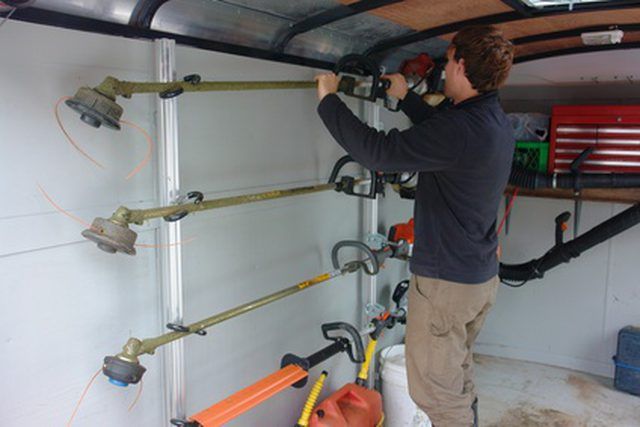Bulbs
Flower Basics
Flower Beds & Specialty Gardens
Flower Garden
Garden Furniture
Garden Gnomes
Garden Seeds
Garden Sheds
Garden Statues
Garden Tools & Supplies
Gardening Basics
Green & Organic
Groundcovers & Vines
Growing Annuals
Growing Basil
Growing Beans
Growing Berries
Growing Blueberries
Growing Cactus
Growing Corn
Growing Cotton
Growing Edibles
Growing Flowers
Growing Garlic
Growing Grapes
Growing Grass
Growing Herbs
Growing Jasmine
Growing Mint
Growing Mushrooms
Orchids
Growing Peanuts
Growing Perennials
Growing Plants
Growing Rosemary
Growing Roses
Growing Strawberries
Growing Sunflowers
Growing Thyme
Growing Tomatoes
Growing Tulips
Growing Vegetables
Herb Basics
Herb Garden
Indoor Growing
Landscaping Basics
Landscaping Patios
Landscaping Plants
Landscaping Shrubs
Landscaping Trees
Landscaping Walks & Pathways
Lawn Basics
Lawn Maintenance
Lawn Mowers
Lawn Ornaments
Lawn Planting
Lawn Tools
Outdoor Growing
Overall Landscape Planning
Pests, Weeds & Problems
Plant Basics
Rock Garden
Rose Garden
Shrubs
Soil
Specialty Gardens
Trees
Vegetable Garden
Yard Maintenance
How to Fix a Ryobi Weed Trimmer
How to Fix a Ryobi Weed Trimmer. The small engine that a Ryobi string trimmer uses is a two-cycle, gas-powered engine. These simple engines require the proper mix of gas and oil for fuel. If old gas or improperly mixed fuel has been used, you can seriously damage your engine. Also, storing your Ryobi with gas still in the tank or carburetor will...

The small engine that a Ryobi string trimmer uses is a two-cycle, gas-powered engine. These simple engines require the proper mix of gas and oil for fuel. If old gas or improperly mixed fuel has been used, you can seriously damage your engine. Also, storing your Ryobi with gas still in the tank or carburetor will leave dried deposits in the fuel line, carburetor and engine, causing power loss and engine failure. Luckily, these small engines have been designed for simplicity and require only a basic understanding of small engines to fix.
Things You'll Need
Toothbrush
Rag
Gas
Needle nosed pliers
Fuel line
Fuel filter
Screwdriver
Socket wrench
Before Doing Anything Else
Dump out any old gas still in the tank into an approved fuel container.
Pre-mix a 40:1 gas to oil mix, using only unleaded gas and high-quality, small engine oil. Fill the tank with fresh gas.
Try starting the trimmer following the manufacturer's starting guidelines. Use the different sections of this article to diagnose the different problems and fixes required.
Engine Doesn't Start
Dump the freshly poured gas back into its container. Look inside the gas tank for any debris or dirt that could be clogging the fuel filter or fuel line. Clean the inside of the tank with the toothbrush, rag and gas.
Disconnect the fuel line from the carburetor with the needle-nosed pliers. Hold the engine upside down and look for fuel dripping out of the carburetor. If there's no fuel inside the carburetor, pull out the old fuel line and fuel filter. Replace them with new parts. Refill the tank with fresh gas.
Pop off the spark plug boot attachment with the screwdriver. Remove the spark plug with the socket wrench. Replace with a new spark plug. Reattach the new spark plug to the boot plug. Don't connect them to the engine, but hold them close to a metal point on the engine block. Pull on the starter rope and check for a spark across the points.
Inspect the boot plug and wire, working all the way back to the ignition module, looking for any damaged or loose connections. Replace any cables or parts as necessary.
Make sure the "ON/OFF" switch is properly working. Check the ignition module for loose or damaged wires. Make sure the system is properly grounded. Replace any wires and parts as necessary. Take the Ryobi to a mechanic if the trimmer still won't start. Your problem is likely in the carburetor, which will need to be cleaned and serviced by a professional.
Engine Starts But Dies Quickly After
Use the screwdriver to remove the air filter/muffler cover's four screws. Pull off the cover and remove the air filter.
Wash the air filter in warm, soapy water. Wait until it is thoroughly dried before putting it back in. Replace if you can't clean the dirt off.
Remove the spark arrestor screen from the muffler. Use the warm, soapy water and brush to scrub off the black carbon deposits on the screen. Replace the screen if it's too dirty to be cleaned.
Check the exhaust port and muffler for any cracks, holes or clogs in the airway. Try starting the trimmer. If it starts, adjust the carburetor screws to set the fuel/air mixture in the carburetor.
Take it to a professional to have the carburetor serviced and cleaned if the problem still persists. Have the professional install a carburetor kit.